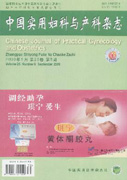|
|
Importance of patient education in the long-term management of endometriosis.
JI Miao-miao,YUAN Ming
2021, 37(3):
292-296.
DOI: 10.19538/j.fk2021030107
Endometriosis(EM)is a common and frequently-occurring disease,often accompanied by severe pain,recurrence,and malignant transformation. At present,EM has been regarded as a costly chronic disease,but the public awareness of EM is relatively poor. This paper aims to help patients establish the concept that EM treatment is a long-term process through patient education,and help patients recognize the clinical manifestations of EM such as pain and infertility.Corresponding treatment measures should be taken according to the needs of patients.The paper also aims to let patients learn about the possible side effects after drug treatment and that it is necessary to take medication to reduce or avoid recurrence.The patient education is supposed to give fertility guidance to patients with fertility requirements,appropriately inform patients of the risk of malignant transformation of endometriosis,identify anxiety and depression of patients,and help them establish social support systems. Finally,both doctors and patients will jointly develop a life-long management plan to promote the long-term management of EM.
|

